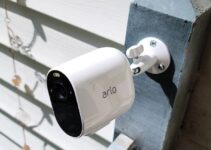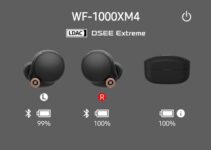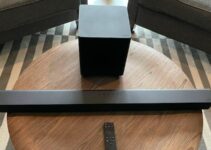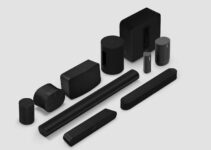If you own a JBL music system, properly optimizing the Equalizer settings could make a huge difference in the quality of your listening experience.
Our comprehensive guide provides you with an in-depth breakdown of the JBL equalizer settings, and we will teach you how to adjust the settings to get the best possible sound.

What is the JBL Equalizer?
Before we go right into the settings to apply, let’s brush you up on some basic information. An equalizer is an audio device that allows adjustment to the sound frequencies of an audio signal. Using the equalizer, you can boost or cut specific frequency ranges to tailor the sound to your preferences.
There are two types of equalizers: graphic and parametric. Graphic equalizers allow you to adjust specific frequency bands using sliders, while parametric equalizers allow you to adjust frequency bands using more precise controls.
The JBL equalizer is a graphic equalizer, so you will find several sliders that you can use to adjust the sound. There are ten sliders that control the different frequency bands, ranging from 31 Hz to 16 kHz. Here’s a breakdown of the frequency bands and their corresponding slider positions:
- 31 Hz: This is the lowest frequency range and controls the bass. Set this slider to 0 if you want less bass, and increase it if you want more bass.
- 62 Hz: This frequency range also controls the bass, but it’s not as deep as 31 Hz. Adjust this slider to find the right balance between bass and midrange.
- 125 Hz: This is the midrange frequency range, which controls the vocals and instruments. Adjust this slider to bring out the vocals and instruments more or less, depending on your preference.
- 250 Hz: This is the lower midrange frequency range, which controls the sound of the snare drum and guitars. Adjust this slider to bring out the sound of the snare drum and guitars more or less.
- 500 Hz: This frequency range controls the clarity of the sound. If the sound is muddy or unclear, adjust this slider to improve clarity.
- 1 kHz: This frequency range controls the brightness of the sound. Adjust this slider to make the sound brighter or duller.
- 2 kHz: This frequency range controls the harshness of the sound. If the sound is too harsh, adjust this slider to reduce the harshness.
- 4 kHz: This frequency range controls the presence of the sound. Adjust this slider to bring out the sound more or less.
- 8 kHz: This frequency range controls the brilliance of the sound. Adjust this slider to make the sound more brilliant or dull.
- 16 kHz: This is the highest frequency range and controls the treble. Set this slider to 0 if you want less treble, and increase it if you want more treble.
How to Adjust the JBL Equalizer Settings
Now that you understand the different frequency ranges and their corresponding sliders, let’s move on to how to adjust the settings.
Step 1: Start with a Flat Equalizer
Before you start adjusting the equalizer, make sure that it’s set to flat. This means that all the sliders are set to 0, and there are no adjustments. This will give you a baseline to work from.
Step 2: Adjust the Bass
Start by adjusting the 31 Hz and 62 Hz sliders to get the right amount of bass. If you want more bass, increase the sliders. If you want less bass, decrease the sliders.
Step 3: Adjust the Midrange
Next, adjust the 125 Hz and 250 Hz sliders to get the right amount of midrange. If you want more vocals and instruments, increase these sliders. If you want less, decrease them.
Step 4: Adjust the High End
After adjusting the bass and midrange, move on to adjusting the high end of the equalizer. Start by adjusting the 1 kHz slider to get the right amount of brightness. If the sound is too dull, increase this slider. If the sound is too bright, decrease it.
Next, adjust the 2 kHz slider to control the harshness of the sound. If the sound is too harsh, decrease this slider. If the sound is not harsh enough, increase it.
Then, adjust the 4 kHz slider to control the presence of the sound. If you want the sound to be more prominent, increase this slider. If you want the sound to be less prominent, decrease it.
Finally, adjust the 8 kHz and 16 kHz sliders to control the brilliance and treble of the sound. If you want the sound to be more brilliant, increase these sliders. If you want the sound to be less brilliant, decrease them.
Step 5: Test Your Settings
When done, test the sound to see if its what you want to work with. Play a variety of songs to see if the adjustments are working for all types of music.
Step 6: Save Your Settings
Once you have found the perfect JBL equalizer settings for your music system, do not forget to save them.
Best JBL Equaliser Settings for Movies
For movies, you want to have a balanced sound that captures all the different sounds and effects that are happening on screen. Here are some suggested settings:
- Bass: +2 to +4 This will give you a little extra oomph in those low-frequency sounds like explosions, deep voices, and rumbling music. But be careful not to overdo it, or you might end up with a boomy, muddy sound.
- Midrange: 0 The midrange is where most of the dialogue and sound effects will be, so you don’t want to mess with it too much. Keep it at zero to maintain a natural, clear sound.
- Treble: +1 to +3 This will bring out the details in the high-pitched sounds like glass shattering, birds chirping, and other subtle effects that can get lost in the mix.
Best JBL Equaliser Settings for Bass
Below is a general starting point that you can tweak to your liking:
- Set the low-frequency range (usually around 20Hz – 250Hz) to a slight boost of around +2dB to +4dB. This will help give your music some added depth and punch in the low-end frequencies.
- Next, set the mid-frequency range (usually around 250Hz – 4kHz) to a slight cut of around -2dB to -4dB. This will help prevent any muddiness or muffled sound in the midrange frequencies.
- Finally, set the high-frequency range (usually around 4kHz – 20kHz) to a slight boost of around +2dB to +4dB. This will help add some brightness and clarity to the high-end frequencies.








